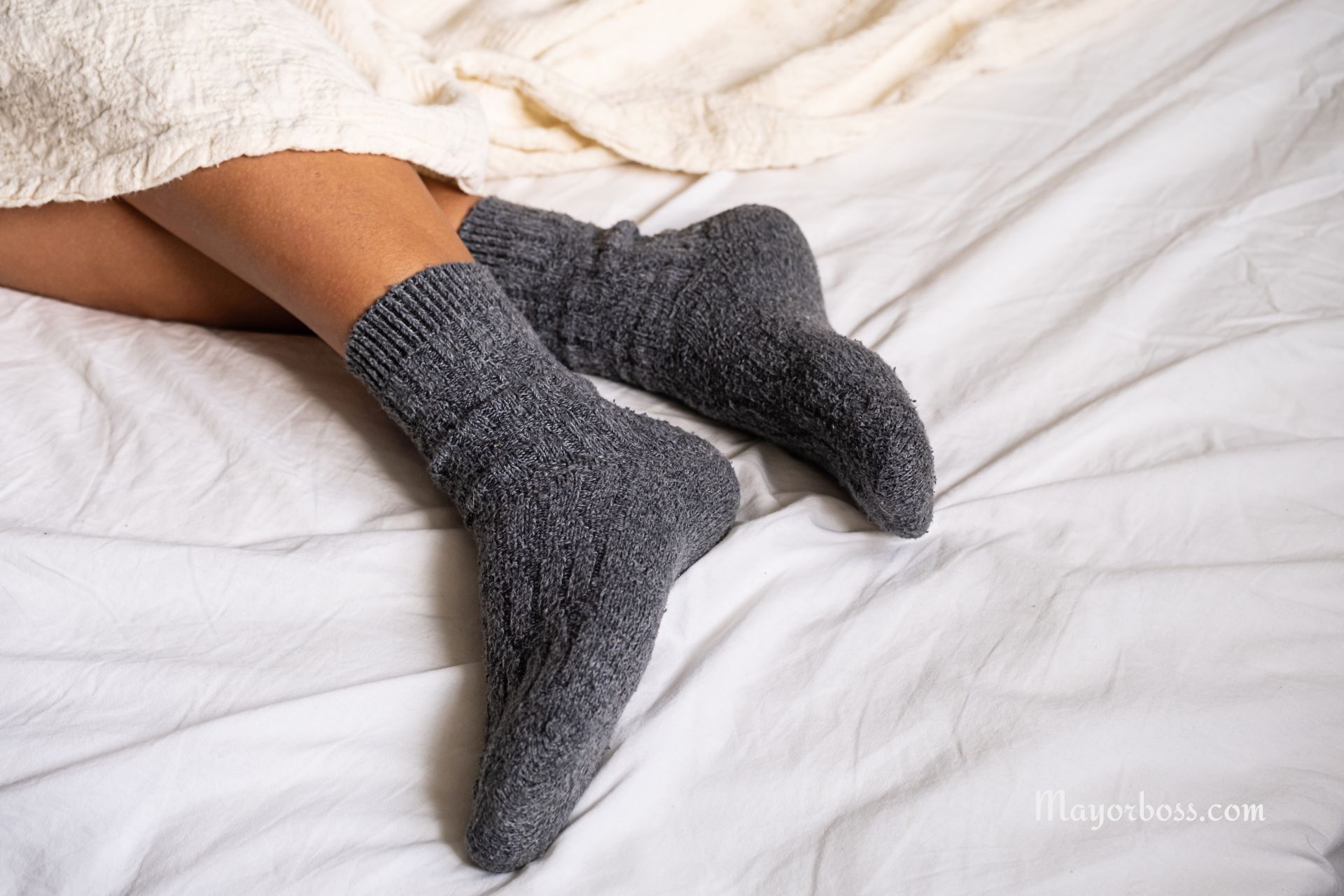This is why you should sleep with your socks on
Getting a good night’s rest is crucial for overall health. Many individuals struggle with falling asleep or staying asleep. You might be surprised to learn that a simple change—wearing socks to bed—could help.

Helps Regulate Body Temperature
Your body temperature goes through different stages during sleep. As night falls, your body signals a drop in core temperature. Warm feet send a message to your brain that it is time for rest. Socks help distribute warmth, which encourages blood vessels in your feet to widen. This widening process, called vasodilation, helps your core temperature shift to the optimal level for deep sleep. A consistent body temperature also leads to fewer night awakenings.
May Improve Sleep Quality
Many people report improved sleep quality when they wear socks. When you keep your feet warm, you spend less time tossing and turning to find a comfortable position. Proper foot warmth often translates into a soothing, snug feeling that supports a more peaceful slumber. Some studies suggest that people who wear socks fall asleep faster than those who do not. This gentle aid can make a difference for individuals who find it challenging to doze off at night.
Promotes Blood Circulation
Your feet are far from your heart, so they sometimes receive blood flow more slowly than other parts of your body. During colder seasons or in chilly rooms, feet are at risk of reduced circulation, which can disturb your sleep. Socks work as a simple aid to keep blood vessels open. Good circulation nourishes your tissues with oxygen and nutrients. It can also ease foot cramps or stiffness that might interrupt your rest. People with circulatory disorders often benefit from such warmth, but it is also good to talk with a healthcare provider if you have chronic circulation issues.
Helps Prevent Dry Skin
When the air is dry, or you live in a cool climate, your feet may become cracked or flaky. Covering them with cotton socks after applying foot cream can seal in moisture. This layer keeps dryness at bay, reduces itching, and avoids cracked heels. Soft, moisturized feet are more comfortable, which makes it easier to relax.
Reduces Hot Flashes
Some people experience hot flashes or night sweats that disturb sleep. During a hot flash, blood vessels suddenly widen and create a rush of heat. Wearing socks might seem counterintuitive if you feel overheated, but research suggests that maintaining a stable foot temperature can reduce the frequency of temperature swings. Warm feet signal your body to maintain a smoother thermoregulatory response. Although more research is needed, this practice may be worth a try if you struggle with hot flashes.
Boosts Relaxation
Placing socks on your feet can provide a sense of security and calm. This small act can mirror soothing habits you might remember from childhood, like being bundled in blankets. Relaxation helps lower cortisol levels, a hormone linked to stress. When your stress levels drop, your mind is more prone to settle into a state of rest. You may find it easier to drift off when you create a consistent bedtime routine that includes slipping on a pair of comfortable socks.
Increase the Chances of Achieving Orgasm
Wearing socks in bed could boost your sex life. A study found that 80% of couples wearing socks during intercourse reached orgasm versus only 50% who didn’t. While more research is needed, warmer skin and improved blood flow may play a role in this.
Considerations and Cautions
Select socks that fit well. If your socks are too tight, they could compress blood vessels and do more harm than good. Choose a breathable material like cotton or moisture-wicking fabric to prevent sweat buildup. Avoid thick, synthetic socks that trap moisture and raise the risk of fungal or bacterial growth. Wash your socks regularly to maintain good foot hygiene. If you have diabetes or peripheral artery disease, consult your doctor about the best type of socks for your situation.
Some people worry about feeling overheated. If you notice that wearing socks makes you sweat at night, opt for lighter socks or adjust your bedding. You might also experiment with partial coverage, such as a foot wrap or a loose-fitting slipper sock. The goal is to keep your feet comfortable and stable in temperature, not to create extra heat that disrupts rest.
How to Start
To begin, pick a pair of socks that feels soft yet supportive around your ankles. Slip them on about 30 minutes before bedtime. This pre-warming phase helps your body transition into rest mode. Add any moisturizer if you have dry feet. Then settle into bed with minimal bedding adjustments, as your socks have already helped set a comfortable temperature. If you still struggle to fall asleep, consider other practices like dimming lights early or turning off electronic devices. These simple steps, combined with wearing socks, can set the stage for better sleep.
Final Thoughts
Good rest supports your entire body, from brain function to heart health. If you find yourself awake at night, try wearing socks. They can help regulate temperature, encourage deeper sleep, and soothe tired feet. While it might feel unfamiliar at first, many people discover that this minor habit makes a real difference. Sleep is one of the best investments you can make for your health. Keeping your feet warm with the right socks could be the simple adjustment you need to improve your nightly routine.
